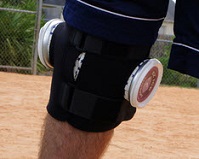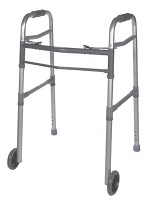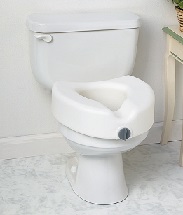Blog Roll: (Contributors)
» Hulet Smith, OT
» Megan Smith, PT
» Mike Price, OT
Topics:
Adaptive Devices
Adult Tricycles
Air Purifier
Allergy
Alternative Communication Devices
Alzheimer's Dementia Products
Aquatic Products
Arthritis Relief Products
Autism
Back Relief
Ball Pit/Pool
Bariatric
Bath Benches
Bathtub Lift
Bed Rails
Bedsores / Decubitus
Bidet
Body Solid Exercise Products
Breast Feeding Products
Bushel Trucks
Cancer
Catheters
CEU
Changing Bench
Child Car Seats
Child Care Products
Christmas Gifts
Clinic/Medical Equipment
Clinical Furniture
Cold and Flu
Communication Devices
Compression Garments
Computer Products
CPAP
Crutches
Daily Assistance Products
Daylight Lamps
Dental Care
Diabetes
Doctor's Office
Dysphagia
Electrodes
Electrolarynx
Emergency Preparedness
Ergonomic Equipment
Exam Tables
Exercise Products
Eyecare
Family Tricycles
First Aid Kits
Floor Scales
Fluidotherapy
Foot Drop
Foul Weather Gear
Furniture
Gait Trainers
General Articles
General Posts
Glassless Mirrors
Hand Sanitizer
Head Protection Helmets
Hearing Impaired
Heart Health
Heating Pad
Hip Fractures
Home Assistance Products
Home/Office Assistance
Hospital Beds
Hoyer Lifts
Hyperbaric chamber
Hyperthermia/Hypothermia
Ice/Hydration Carts
Impotence Products
Incontinence Products
Infection Control Gowns
Inspirational Stories
Lift Chairs
Light Therapy
Low Vision Products
Massage Tables & Chairs
Massage Units
Maternity
Medical Facility Products
Medical Scales
Multi-Sensory Environment
Natural Healing
Nebulizers
Non-Hospital Bedding
Nutritional Supplements
Office Furniture
One-Handed Products
Operating Room Devices
Ostomy Products
Oxygen Compressors
Oxygen Concentrator
Oxygen/Nebulizer Masks
Pain Relief
Paraffin Unit
Patient Lift
Patient Lifts
Patient Restraints
Patient Transfer Systems
Pediatric Bath Chairs
Pediatric Furniture
Pediatric Learning
Pediatric Recreation
Personal Listening Devices
Personal Warming Products
Physical Therapy
Pill Organizers
Pillows
Playground Equipment
Pool Lifts
Press Releases
Procedure Chairs
Pulse Oximeter
Reading Assistance
Reference Materials
Rehab Equipment
Rehabmart News
Rehabmart Newsletter
Respiratory Health
Rollators
Saunas
Scooters
Seniors
Shower Chairs
Shower Commode Chairs
Shower Gurney
Showers Chairs
Side Access Bathtubs
Skin Tear
Special Needs Dinnerware
Special Needs Seating
Special Report Articles
Splints
Sport Injuries
Standers
Staying Home
Stethoscopes
Stimulus Reward Toys
Stress Relief
Stroke
Strollers
Summertime Products and Summertime Fun
Talking Products
Therapy Balls
TheraTogs
Thermometers
Traction Devices & Tables
Treatment Tables
Ultrasound
Vibroacoustic Therapy
Vision Products
Walk-In Bathtub
Walking Aids
Walking Boot
Weighted Wearables
Wheelchair Accessories
Wheelchair Cushions
Wheelchair Lifts
Wheelchair Ramps
Wheelchair Transfer Systems
Wheelchairs
Women's Health
Work Hardening Products
Wound Care
System provided by Maximtech.com
Handy Rehab Products to Use During Home Recovery
Posted in Rehab Equipment by Hulet Smith on 6/8/2013
I must have written a hundred blog articles about medical supplies and products for the Rehabmart library over the years and thankfully never really had to use many of the things I wrote about, until now. Several months ago I experienced a weird occurrence of having two separate accidents that affected each of my legs at different times, resulting in both legs being severely sprained above my knees. This happened about two months ago and I am still not walking independently without a walker, and am right now sitting in a wheelchair as I type this at my office desk.
I say this not to evoke any sympathy, but to say that I can now report on what rehab products I personally found that are needed during recovery from a lower body injury, and how well they work. I was able to stay home during this recovery process, which is a good thing considering that I wasn't able to get out of the house and off the porch, much less get into a car for the longest time. I am also fortunate to have a loving and helpful wife to assist me with my daily activities. Due to my injured legs I was not able to basically use them at all with any weight bearing activity. While recovering, I fell two more times, both times reinjuring my legs to various degrees and setting my recovery schedule back several weeks.
After my second falling injury where I reinjured my left leg, and newly twisted and sprained my right leg, I was not able to put any weight onto either of my legs. At this time I was completely dependent on my wife to assist me in just about everything which included getting up from and down into a sitting position. This is when I realized that a gait belt is a mighty fine and useful product. In my previous employment experience working with patients, mostly geriatric psychiatric patients in hospitals where many times I have had assist with patient lifts and transfers, I found out as the caregiver that using a gait belt is much easier and safer than not using one.

As a patient, having a gait belt utilized in getting me up and down gave my wife a better grasp and leverage to lift me up without hurting her back as she might have by trying to grasp me under my arms. I also felt a better, and more importantly, a safer lift action when using a gait belt. During my first week of recovery when my walking gait was very unsteady, she was also able to hold onto the back of the belt while walking behind me, ready to catch me if I lost balance.
Although the gait belt worked great, the primary and most important thing I needed soon after and for the first several weeks was to ice both my knees where the injuries and inflammation were the worst. At first I used ice cubes inside two plastic zip-lock type bags with the thought that two layers of plastic wouldn't drip. As usual, I was wrong. Icing an acute injury is very important and this I did on a sometimes hourly basis, every day. During most of this time I used the double-bag method which was messy and somewhat painful. The bags always leaked from the moment they were placed on the knees to a point where I had to place a towel under my legs so the furniture and floor wouldn't get wet. Also there was not a lot of insulation between the ice and my skin and after 10 minutes or so my knees would become painfully cold, terminating the ice time prior to the recommended rehab time.

I was able to replace this mess with a handy product called the EZ Ice Therapy Double Knee Wrap and the difference was night and day. This neoprene knee wrap with two thick Velcro straps comes with two latex-free cotton polyester ice bags which can provide 360 degrees of coverage. The two ice bags do not leak at all and are kept tightly yet comfortably in place with the neoprene wrap while providing compression and stability, even while I stumbled through the house with my walker, allowing me mobility during my anti-inflammation treatment. This ice therapy wrap allowed me to use the full allotted cold therapy time without my skin receiving freeze-burns. The EZ Ice Therapy Knee Wrap has been a great and helpful addition in my recovery.
Another item that was essential for my recovery was a Universal Folding Walker with Wheels. Before I received this walker, the first several days I was using a pair of crutches. Using crutches when neither leg could fully support me seemed to me a falling accident waiting to happen. Using the walker really opened up my mobility. Having the wheels on the front legs of the walker were at first a little scary but with patience and concentration, I was able to move at a smoother pace.

As recovery time continued I was able to replicate a more natural walking stance and pace than I could have done with a walker with no wheels. Made with sturdy anodized aluminum, the walker was lightweight yet very strong to help carry my bulk over different floor surfaces. With the two push-button mechanisms on each side of the top front bar of the walker, it was easy to fold up when needed to store at the side of the sofa or bed. Without the use of this walker I would have been further behind in my recovery, but with it, I was able to get up and move around every hour or so, increasing circulation in my legs and strengthening the leg muscles and regaining my balance.
Another very helpful product was a reacher/grabber device. When one is injured and not able to easily get up off the sofa or even to grab something dropped on the floor even if it is only a couple of feet away, is very frustrating. This is why a reacher is a wonderful stress relieving product.

Reachers are primarily 2 feet to 2 ½ feet long and have a handle on one end and a claw-like feature on the other end. Usually the claw teeth are interlocking with soft, molded tip grooves and are able to grasp and lift items. This is very handy and can become one of the most prized possessions of the user during his or her recovery. It can also double as a great back or foot scratcher when the need arises.
Lastly, a very helpful yet typically not much thought about product that is a great help during recovery from leg issues is an Elevated Locking Toilet Seat. It may sound not important yet when individuals experience difficulty bending their legs or doing a weight bearing movement like sitting down or getting up from a seat, the extra height on the toilet seat is a great asset. Most toilets are low to the ground for better functionality but they become a hazard of sorts to the leg-injured.

A raised or elevated toilet seat will provide an extra height of 5 ½ inches, making it easier and safer to manage. Using an elevated locking toilet seat will also help eliminate the fear and worry of it coming loose during or after the transfer onto or off the seat. One thing that goes through the mind of a person with two bad legs is falling and one of the worst places to fall would be the bathroom, with its hard tile floor and hard, sharp angled sinks, bathtubs, etc. to bang against on the way down to the floor.
Becoming injured due to an accident or recovering from surgery is tough enough on both the patient and the caregiver, but reinjuring oneself during the recovery period is so much worse. The pain or reinjuring is bad enough and not pleasant to experience but to me, the worst part was the physical and mental set-back with the recovery process. Prolonging recovery due to a falling accident is difficult on the body and maybe worse on the psyche. To work hard during the painful therapy and to start to feel stronger and more in control, leading to a light at the end of the recovery tunnel can be destroyed in a quick moment due to a tumble to the floor. The thought of starting over again, going through more weeks or months of pain, fear, and dependence on others can be a major blow to the mental health of that person. Therefore, any medical product, no matter how small or silly it may seem, can be very helpful to alleviate the stress of daily tasks and to prevent mishaps during recovery, and will hopefully quickly lead the person back to the type of living he or she would like to enjoy again.
Bill Stock
Executive Editor,
Content & Social Media Services
and
Hulet Smith, OT
Rehabmart Team Leader & CEO
